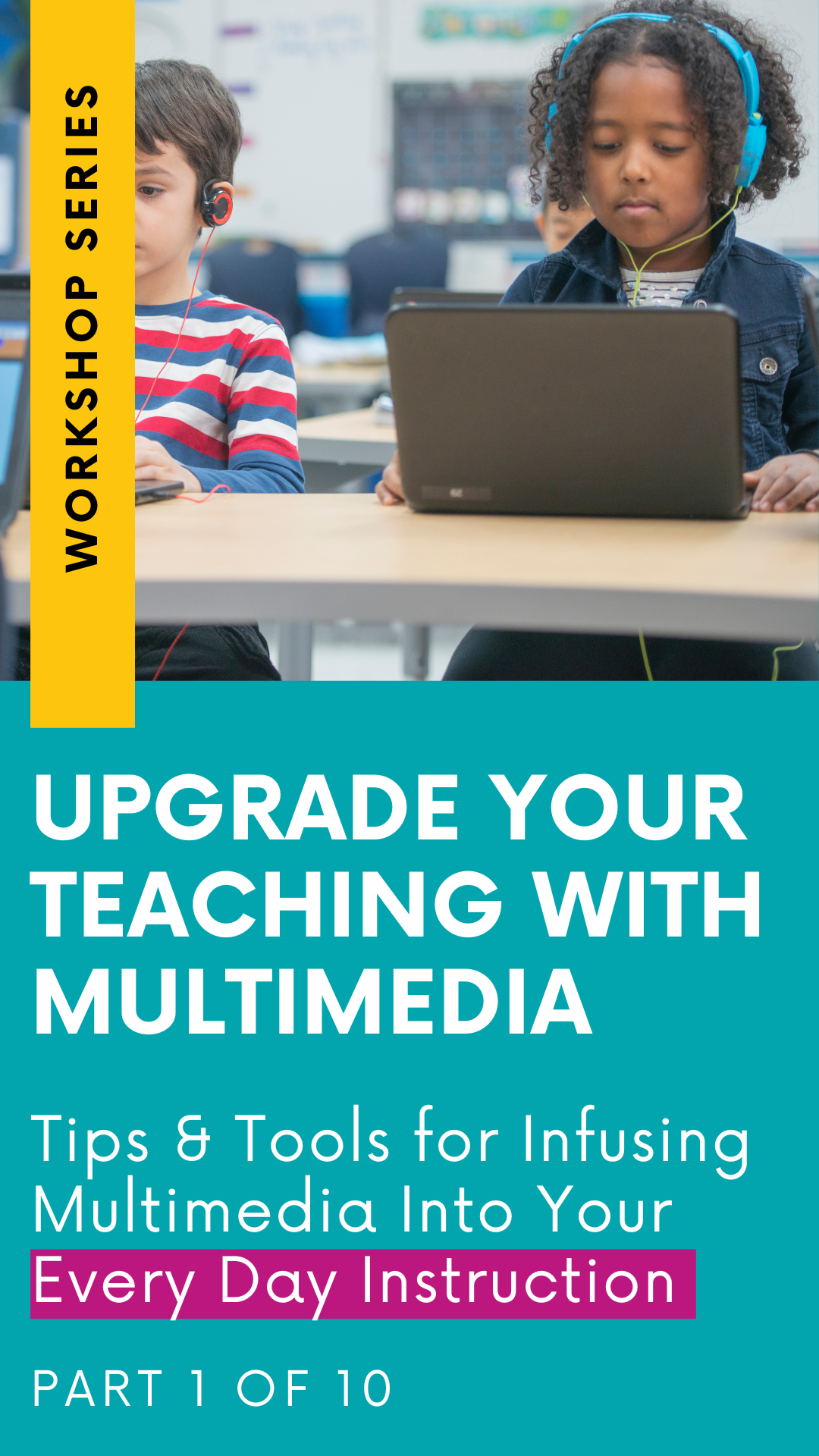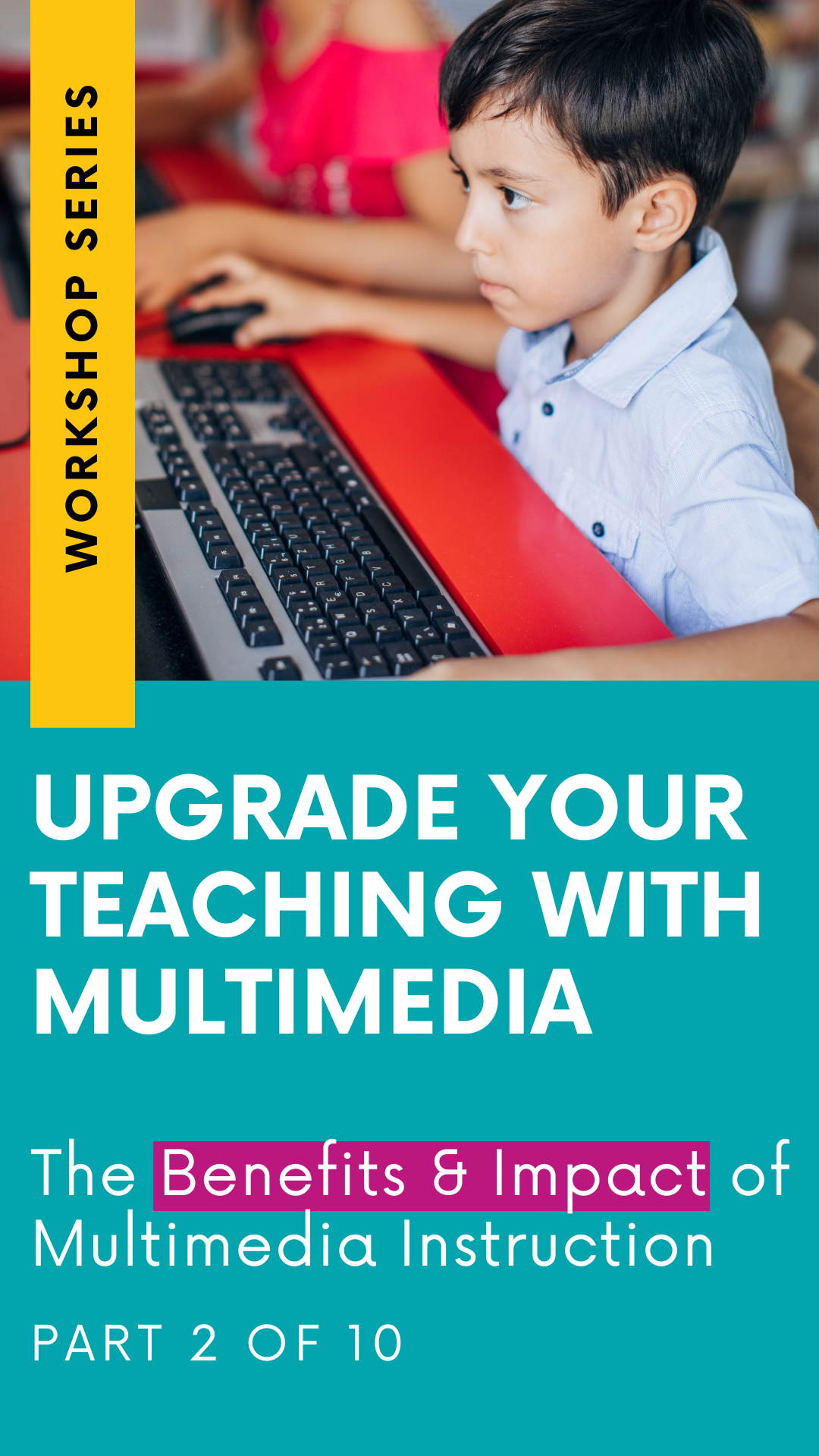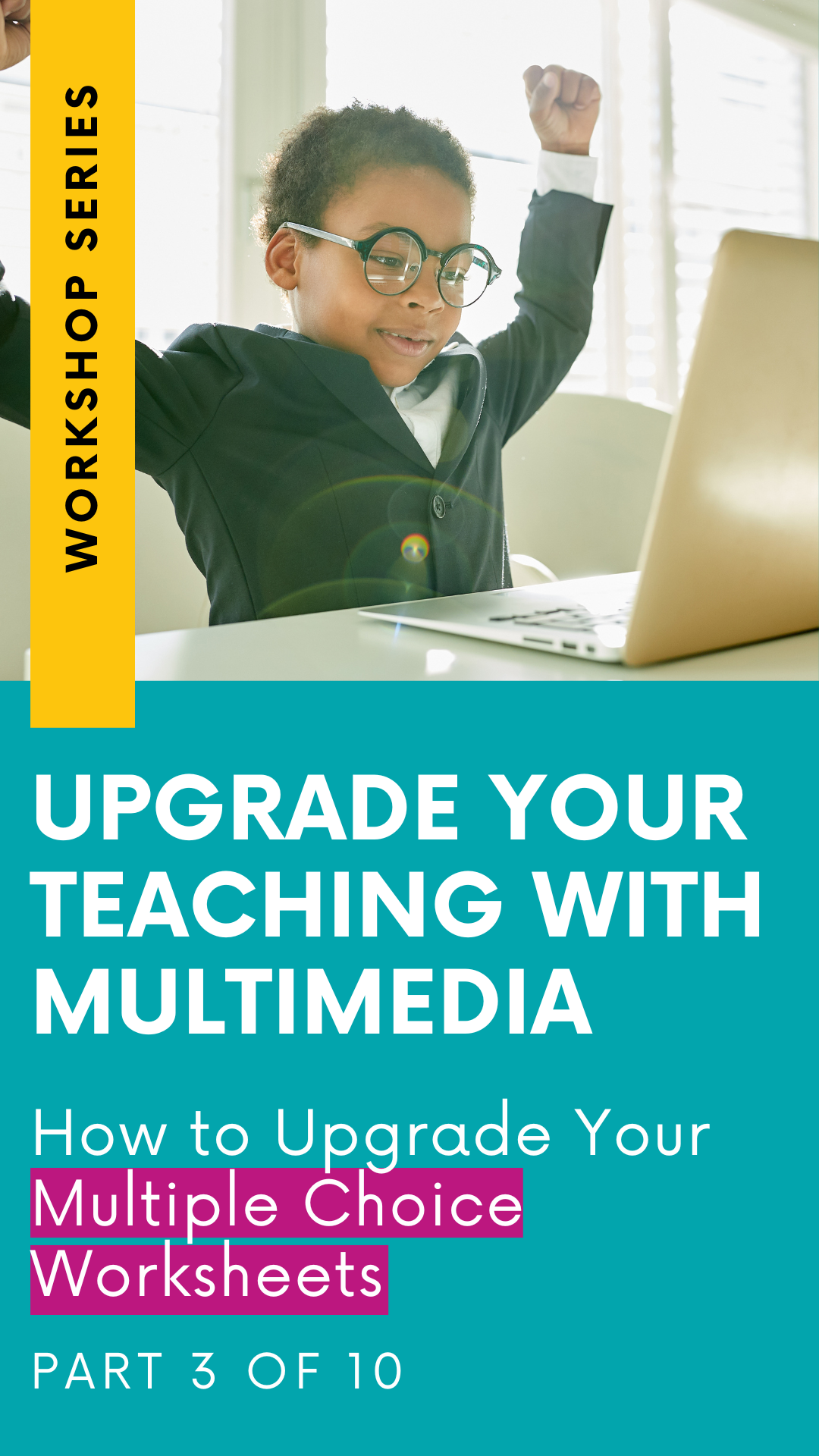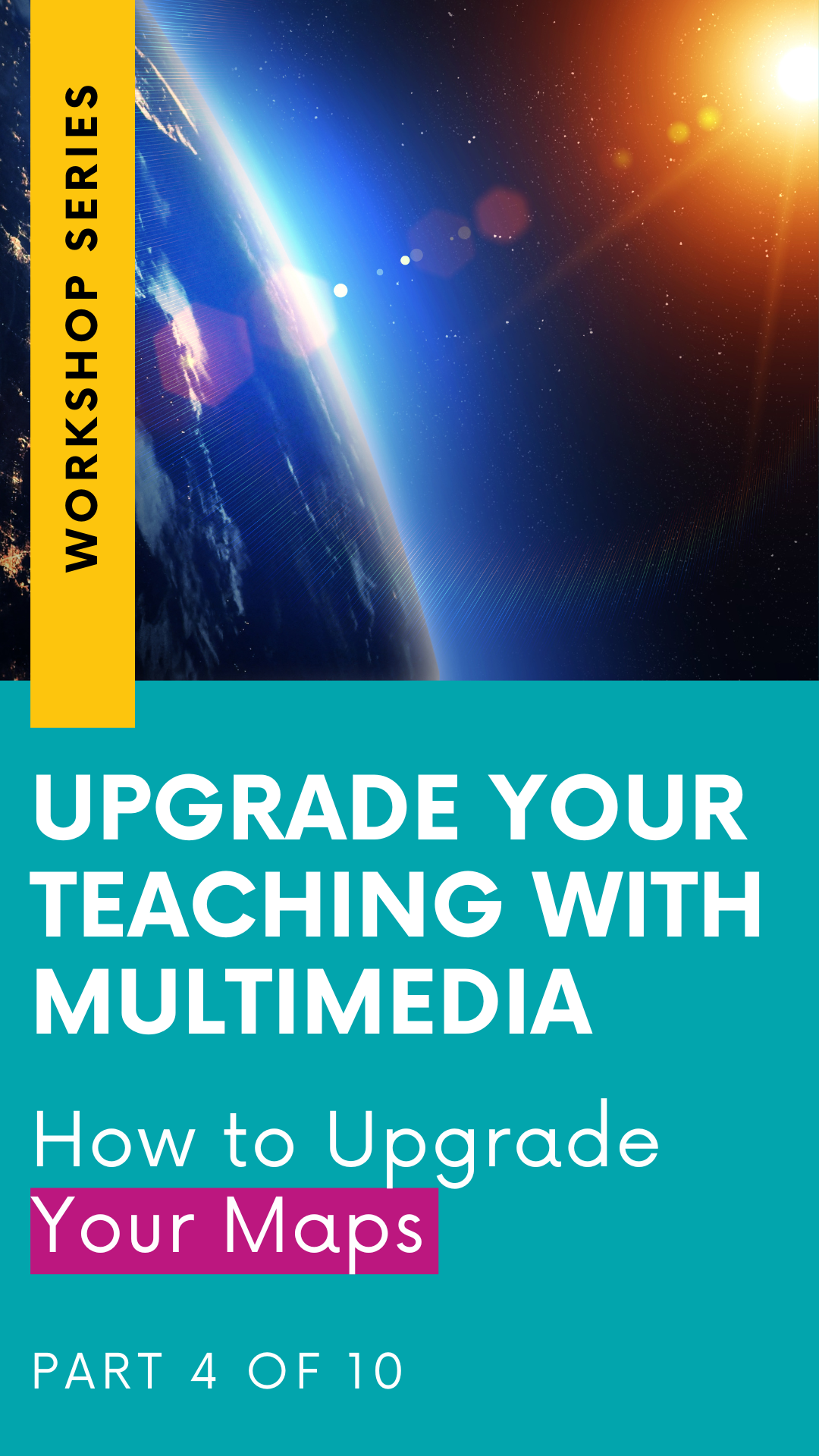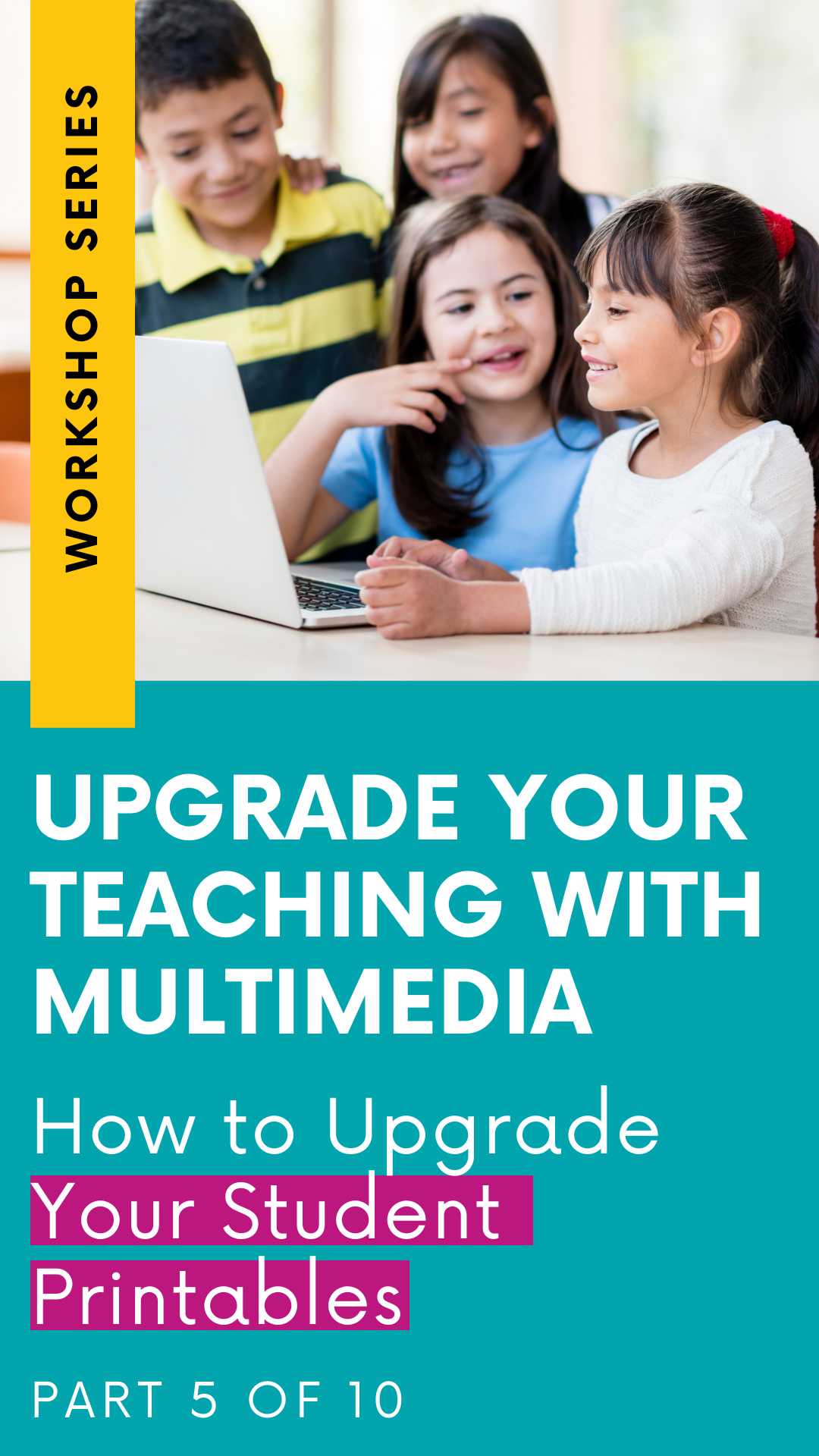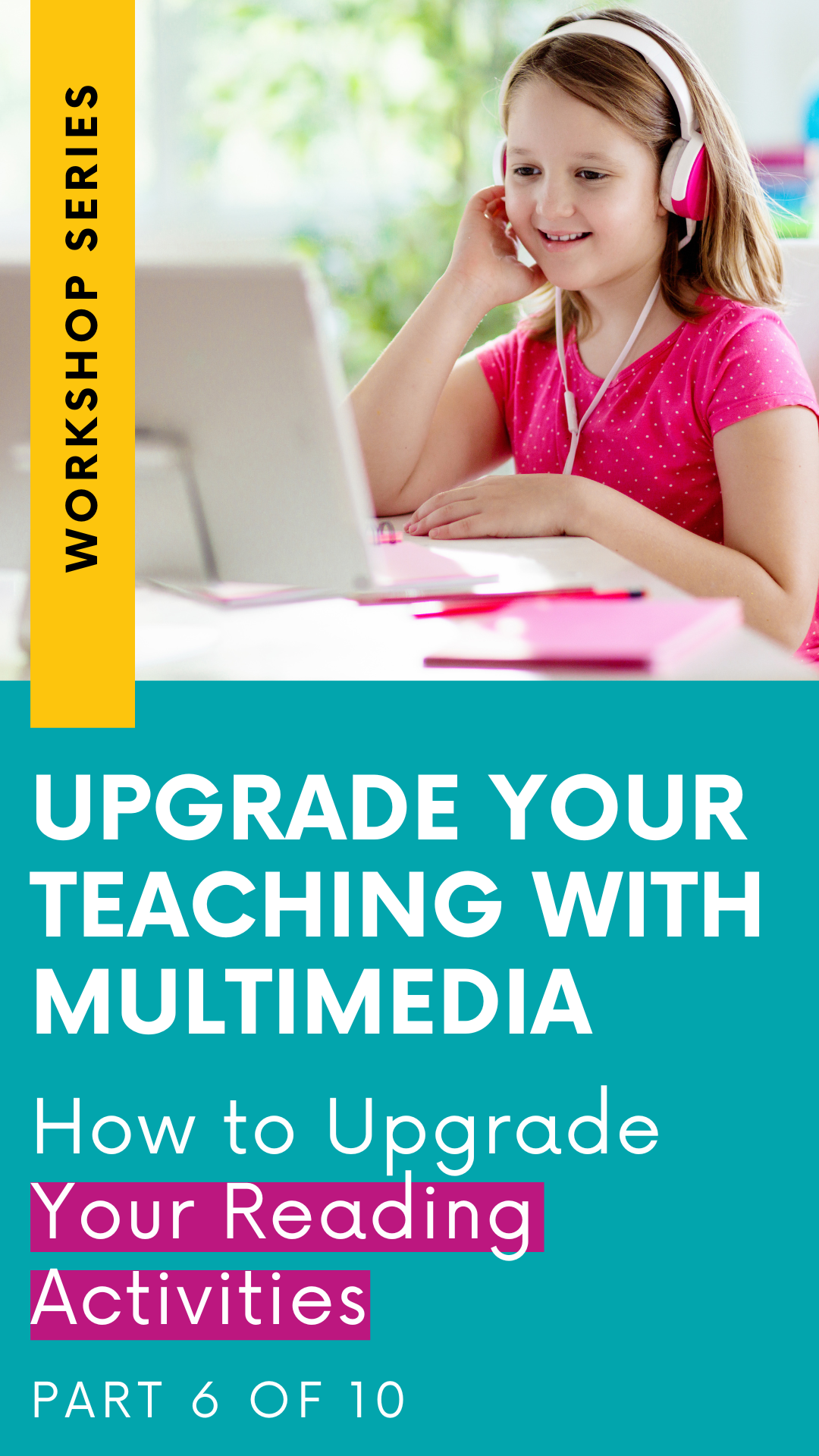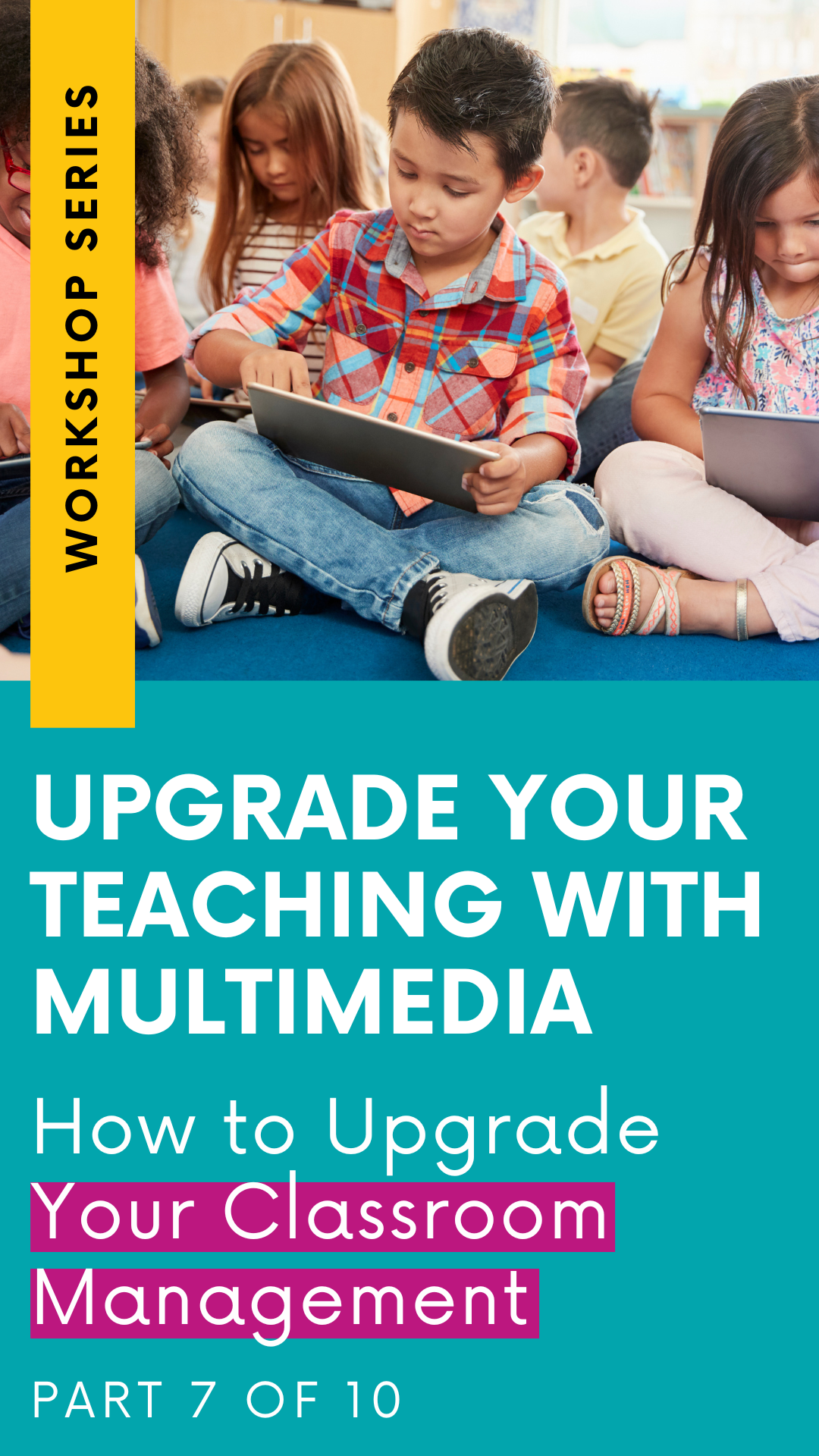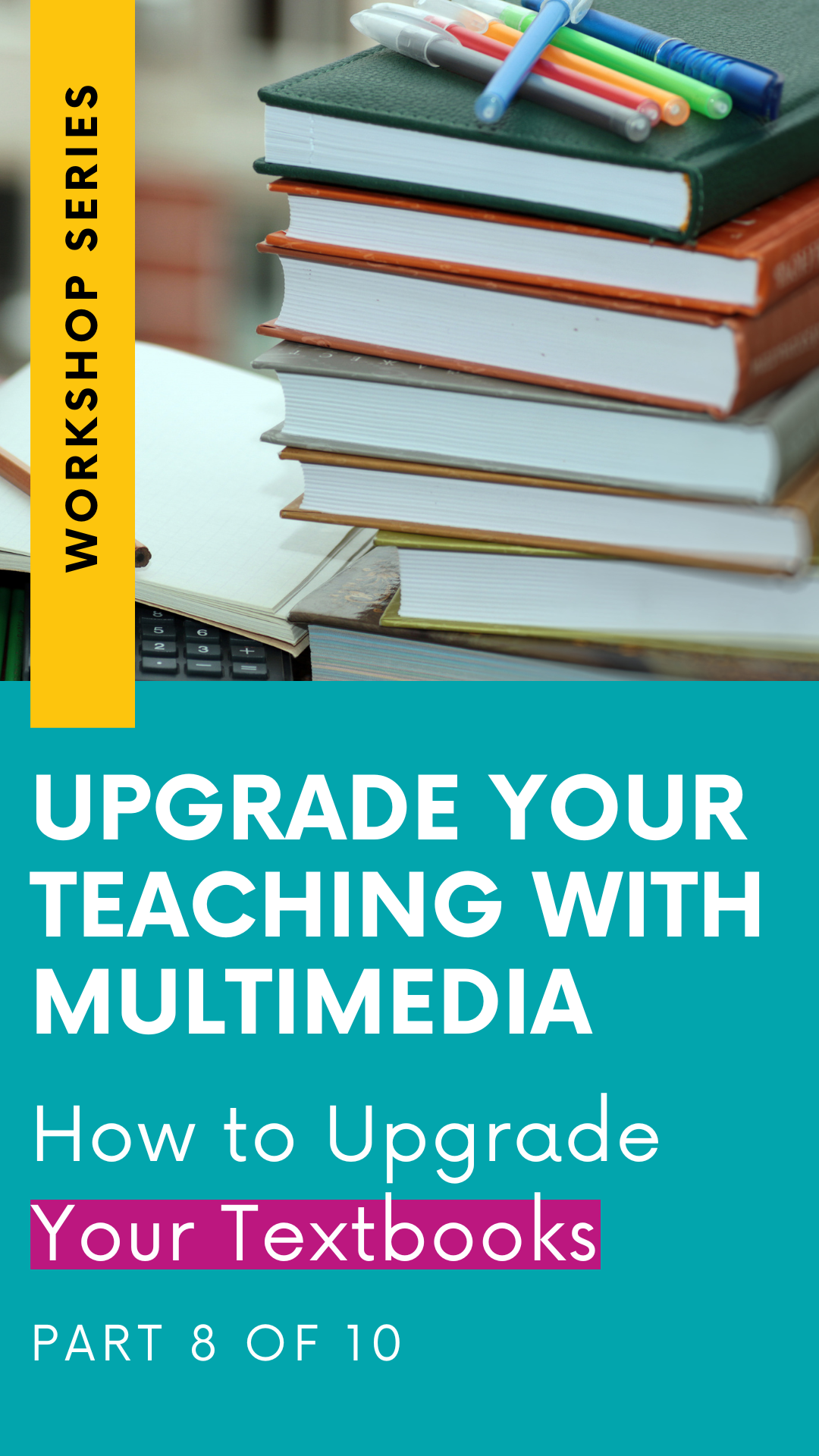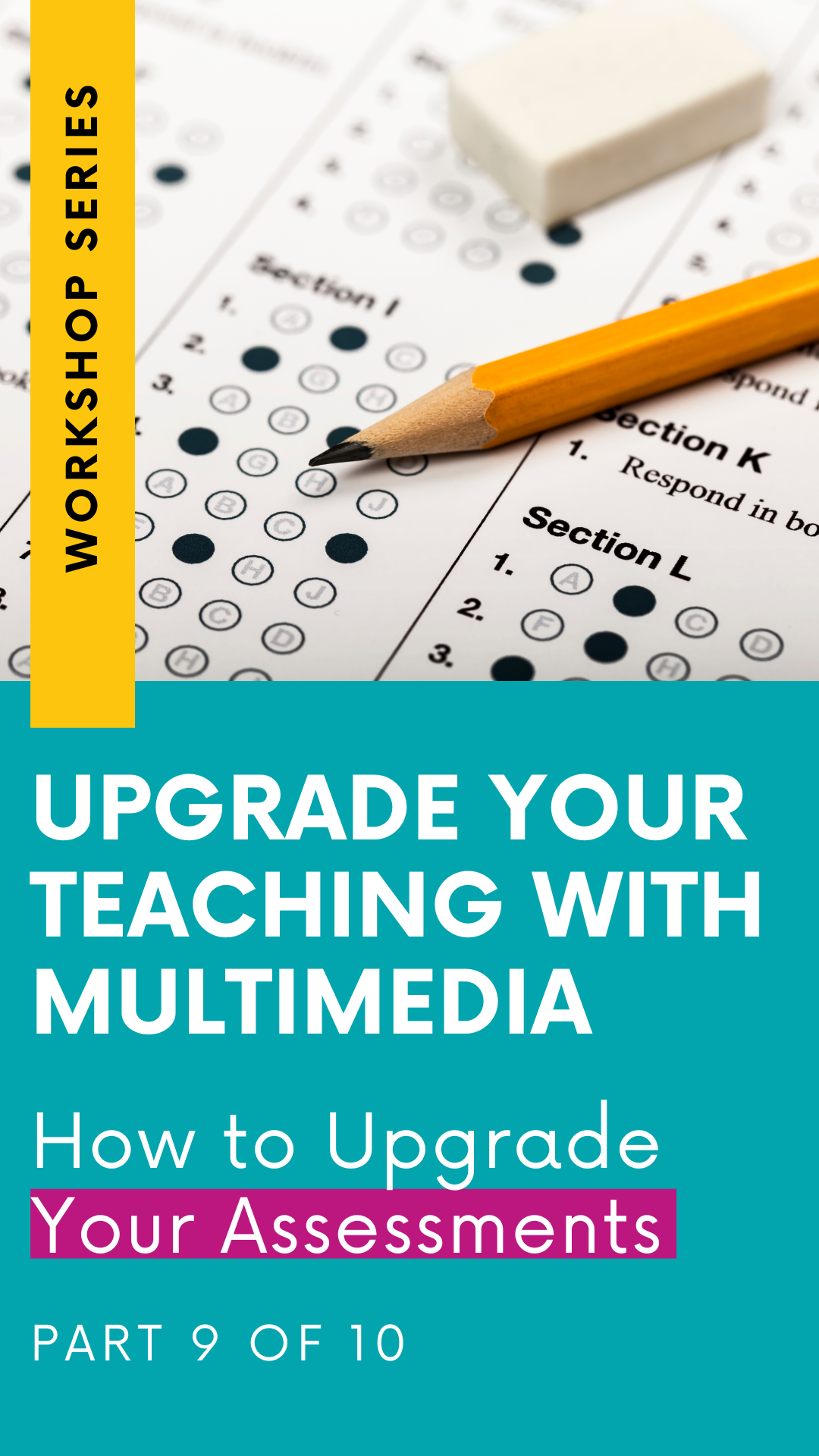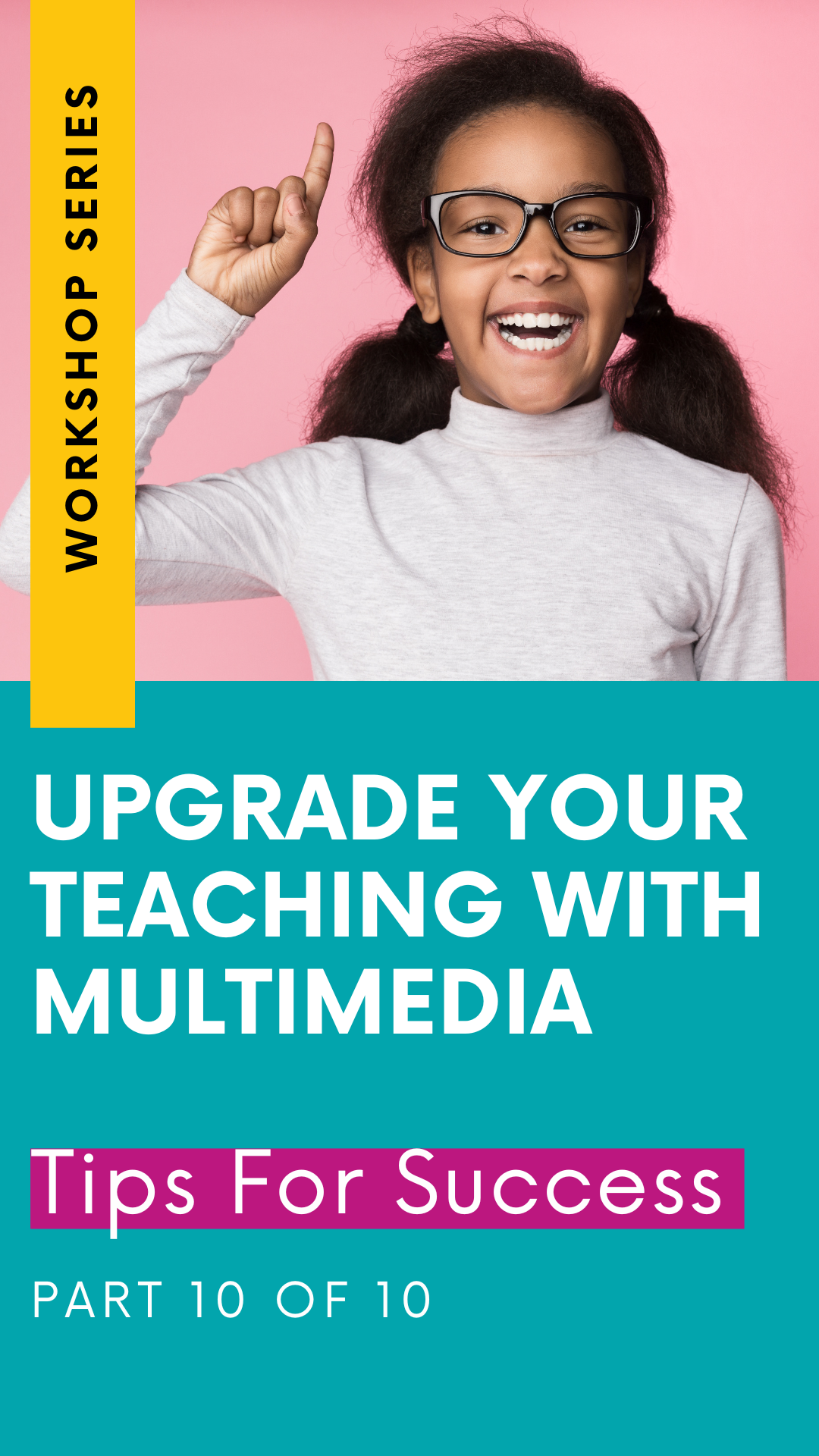Upgrade Your Teaching With Multimedia Workshop Series: The Benefits & Impact of Multimedia Instruction (Part 2)
What’s the ‘why’?
In part one of this workshop series, we talked about the basics of multimedia instruction, everything from what it is to what it looks like.
But, if you’re like me - you want to know the “why.”
WHY should you be using multimedia in the classroom? WHY is it worth paying attention to (especially when your teacher plate is already full!) WHY does multimedia instruction keep popping up in conversations about education?
Well - that’s where our conversation is going to take us today. Let’s talk about the benefits and impact of multimedia. As you might suspect there has a been a lot of research and study done to show how multimedia and technology impacts the brain.
Of course we have all heard about negative impacts that too much screen time or technology might have on people - but I think it’s important for us to remember that multimedia and technology is all part of a balanced learning environment. And, in the context of what we are talking about today - specifically multimedia instruction - so much research has shown time and time again that it can impact learners in a positive way.
In fact - multimedia is a powerful tool in the classroom.
The Benefits and Impact of Multimedia Instruction
Multimedia Instruction Speaks our Students’ Language
You may have heard the term: digital native before. In fact, you may have even heard ME talk about digital natives before.
But just in case you haven't, let me break it down for you. A digital native is someone who was born or raised in the age of digital technology. These are the people who grew up with computers and the internet as a regular part of their lives, starting from a young age. And guess what? Those are the very same students sitting in your classroom right now. Technology and multimedia are like their first languages.
Think about it. These kids have been surrounded by all sorts of digital gadgets since day one. Laptops, smartphones, tablets—you name it, they've got it. They effortlessly breeze through the virtual world, finding information, connecting with others, and expressing themselves in ways that may seem second nature to them.
Their fluency in all things digital sets them apart. They're like tech wizards, effortlessly navigating the intricacies of the digital landscape that might leave some of us scratching our heads. As teachers, it's important for us to recognize and appreciate the significance of technology and multimedia as their go-to means of communication, learning, and self-expression.
Consider the responsibility of teaching this type of learner. It's huge. It means we need to adapt our teaching methods and lesson plans to cater to these tech-savvy learners. We can't just stick to traditional chalk and talk anymore. We need to incorporate technology and multimedia into the mix to make learning engaging and relatable to them.
By doing that, we tap into their natural abilities and give them the chance to shine. We're talking innovation, collaboration, and critical thinking, all fueled by their innate digital skills.
As educators, it's our job to embrace their tech-savviness, recognizing that technology and multimedia are their native languages. By doing so, we create a learning environment that speaks their language and empowers them to thrive in our digital world.
Multimedia Instruction increases student engagement & Success
Let's dig deeper into the awesomeness of multimedia and how it amps up student engagement and success. You see, our brains process information using two main channels: visuals and sounds. And guess what? When we tap into both of these channels using a multimedia approach, our brains become super-powered information processing machines!
When we offer students a blend of visuals and auditory elements through multimedia, something magical happens. Our brains kick into overdrive, soaking up and processing way more information than before. It's like upgrading our brain's RAM and storage capacity!
Imagine this: instead of relying solely on boring textbooks or monotonous lectures, we can harness the power of multimedia to deliver information in exciting and dynamic ways. We're talking images, graphics, videos, audio, and all sorts of other mediums working together harmoniously. It's like a symphony of knowledge hitting our students' brains from all angles.
When you watch an educational video or interact with an interactive simulation, you're not just reading words on a page or listening to a monotone voice. You're immersed in a rich sensory experience that brings concepts to life. Your brain absorbs information like a sponge, and you're more likely to remember and understand it.
Multimedia Instruction improves retention Of new information.
Let's talk about how multimedia kicks retention and new information up a notch. See, our brains have a couple of memory systems in play: working memory and long-term memory. Working memory is like our temporary storage space, while long-term memory is where all our background knowledge hangs out.
Now, here's the thing: before new information can make its way into long-term memory, it has to pass through working memory. But here's the catch—our working memory has its limits. It can only handle a small chunk of new information at a time. So, if we want our students to hold onto that precious knowledge for the long haul, we gotta make the transfer from working memory to long-term memory as smooth and speedy as possible.
And you know what comes to the rescue? You guessed it—multimedia! It swoops in and works its magic to make that transfer happen faster than a cheetah on a caffeine buzz.
Think about it like this: when we present information through multimedia, we're hitting multiple senses at once. We're exposing the brain with visuals, sounds, and who knows what else. And this sensory feast gives our working memory a helping hand. It's like providing a smooth highway for the new information to cruise right into long-term memory without any traffic jams or detours.
By using multimedia, we give our students a fighting chance to retain that valuable knowledge.
The bottom line is this: multimedia makes the transfer of new information from working memory to long-term memory faster and more efficient. And that means our students have a better shot at holding onto that knowledge for good.
Multimedia instruction creates a more dynamic learning environment
Dynamic learning is a teaching approach that's all about adapting to the unique needs of each and every learner. It's like having a personalized learning experience tailored just for you!
Dynamic learning is all about being flexible and responsive. It takes into account a student's progress, interests, and learning style, and adjusts accordingly. We're talking about an instructional method that harnesses the power of technology and data-driven insights to create personalized learning experiences.
In dynamic learning, instruction is customized to fit each learner's strengths and weaknesses. The content, the pace, and even the way we teach—it's all tailored to meet the individual needs of our awesome students. This means they can progress at their own pace, no more racing against the clock or feeling left behind. Plus, they get personalized feedback that helps them truly understand and master the material.
Technology and multimedia play a big role in dynamic learning. Access to technology and multimedia tools helps teachers to make this dynamic learning experience possible. With new advances popping up all the time, technology opens up endless possibilities to support our students. It's especially valuable for those with diverse backgrounds, learning challenges, or special needs. With the help of technology, we can provide individualized attention and support, ensuring that every student gets the guidance they need to thrive.
Multimedia Instruction enhances creativity, critical thinking, & 21st Century skills
Multimedia instruction takes learning to a whole new level.
You see, multimedia instruction kicks those boring experiences, like textbooks and worksheets, to the curb. Instead, it invites students to unleash their creativity and explore exciting ways to learn.
By diving into multimedia, students are encouraged to think outside the box. They're not just regurgitating facts or memorizing stuff. Nope! They're actively engaging with the material, connecting the dots, and coming up with creative responses that showcase their understanding - using, you guessed it - multimedia and technology.
And here's the cherry on top: multimedia instruction equips students with essential 21st-century skills. We're talking about those skills that are in high demand in today's fast-paced, tech-driven world. Skills like problem-solving, collaboration, communication, and digital literacy.
When students interact with multimedia, they're honing their critical thinking skills. They're analyzing information, evaluating sources, and making informed judgments. They're becoming discerning consumers and creators of content in the digital realm.
And let's not forget about communication. The use of multimedia and technology opens up new avenues for students to express themselves. They can use visuals, videos, and various digital tools to effectively convey their thoughts and ideas.
Hopefully by now I’ve sold you on the idea of using multimedia instruction in your classroom. But - you might also being thinking that although it sounds great on paper - you’re not exactly sure how to get started. Well - that’s where we’re going next. Over the next few sessions in this workshop series, I’m going to break it all down for you in bite-sized chunks.
From how to upgrade your multiple choice worksheet, to upgrading your maps, student printables, textbooks, and even how to upgrade your classroom management tools - all with the help of our trusty, 21st century friend: multimedia. I’m going to be telling you exactly what tools and strategies to use to make multimedia instruction a reality in your classroom! Stay tuned!


